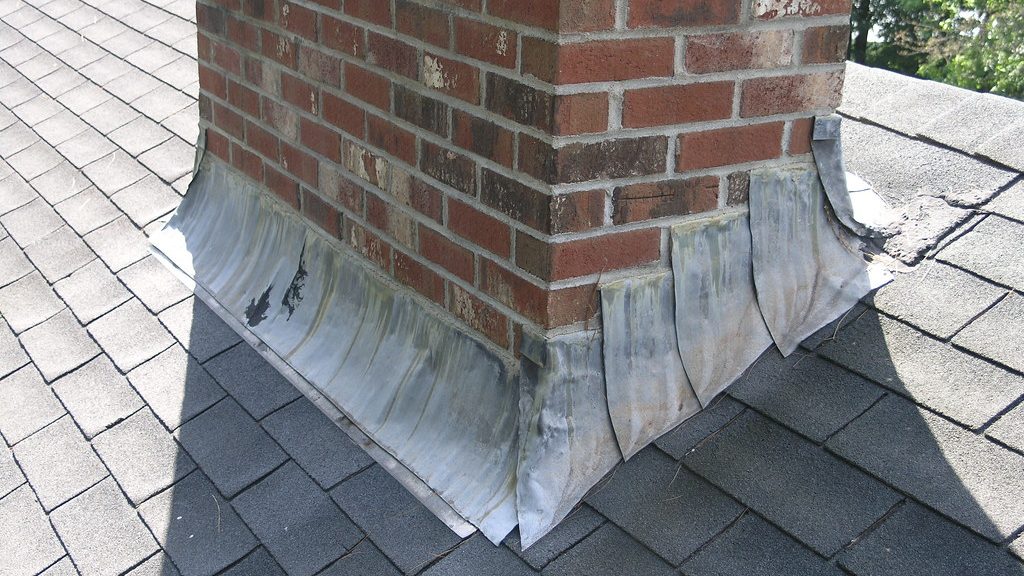From the point of the view of a typical homeowner, a roof is nothing more than some tiles neatly arranged to prevent water from entering the structure. Needless to say, a roof is much more than that and it is actually quite intricate and ingenious when it comes to its design. Especially important in the roof’s structure are joints and openings that cannot be sealed off by shingles and tiles alone. Here, roof flashing is paramount.
These are the weakest point of any roof and there is no other way to make them watertight than flashings. These metal slabs might look like scraps of metal that are ready for the dump but they are the reason why you are dry inside the house during a rainstorm outside.
Flashings
Flashings are nothing more than metal sheets that are cut to size to fit along the edges of your roof. Tiles are impossible to cut so precisely, so openings and edges of the roof are lined with flashings. They are usually drawn under the structure of the roof, preventing any water from getting in. More importantly, flashings stop condensation because they are watertight. This means that moisture is no longer a problem. The seal must be right because water tends to accumulate between different layers of roofing materials.
Closing the gap
Openings on the roof are the most vulnerable spot because they are usually of an uneven shape. Furthermore, vent pipes, skylights, and chimney all stand in the middle of the roof so it is hard to combine them with the shape of tiles all around them. This is where flashings come in to fill the gap.
Once they are installed, an additional layer of caulk is applied to seal the slightest of holes. Most water damage to the roof occurs due to minuscule holes that remain after the flashing is installed. That is why caulking the roof is an essential step in closing all the gaps.
In residential roofing, flashings are almost exclusively made from metal. There are also plastic flashing and the ones made from composite materials but there are mostly used in commercial roofing. Plastic is less durable than metal and it tends to lose its shape and strength when exposed to the elements. Sunlight is especially damaging for plastic flashings, as it makes them brittle and prone to damage.
Metal flashings are by far the most reliable kind. The metals used are aluminum, copper, stainless steel, and lead. In terms of popularity, copper flashings are the most usual ones. However, a good-quality lead flashing can last longer and it is virtually impossible to damage. This is due to the traits of lead as one of the strongest metals used for roofing purposes.
Installation
Speaking of structural strength, a flashing doesn’t only have to repel hail or sunlight. More often than not they get damaged by a falling branch or some other heavy object that ends up on your roof. In order for the flashing to retain its shape and function, it needs to be installed properly.
The possibility to bend a given flashing into any shape comes to prominence here. When it comes to circular shapes, such as air vents, flashings often come in a single sheet of metal. This decreases the number of joints, i.e. the number of weak spots. Of course, it is easier to install flashings while the roof is being built but if you hire experts, a subsequent flashing installation should not be a problem. In fact, homeowners who are not afraid of heights often perform custom repairs that consist of adding an additional layer of caulk.
Connecting with the gutters
Since they run along the edges of the roof, flashings have an additional role. If possible, they are not installed in the way of water pouring down the surface of the roof but in some cases, this cannot be avoided. Some shapes of the roof direct the rainwater over the flashings and in these cases they have to act as drains of sorts. They should be smooth enough to direct the water inside horizontal gutter that will take the water underground from there.
Because people are generally unaware of the importance of flashings, roofers often get the preposterous question whether the flashing can be done away with. They might not be eye-catching details like colorful tiles but a roof is not complete without flashings. If you decide not to install them, you might as well ditch the entire roof and leave the house unprotected.
As you have seen from the evidence above, flashings are the roof. They might not have the luxurious look of roof tiles but they help keep the entire structure watertight. Investing in good flashings now saves you thousands of dollars in investing in new furniture once the first leak in the roof appears.

